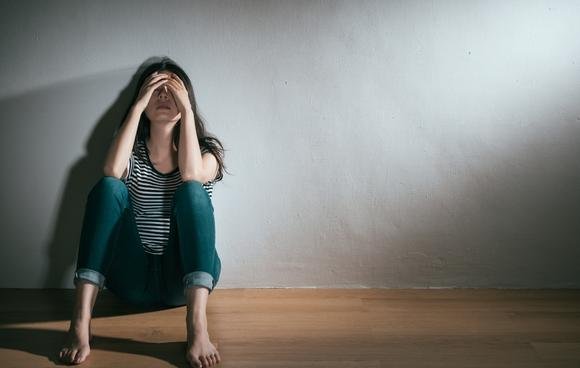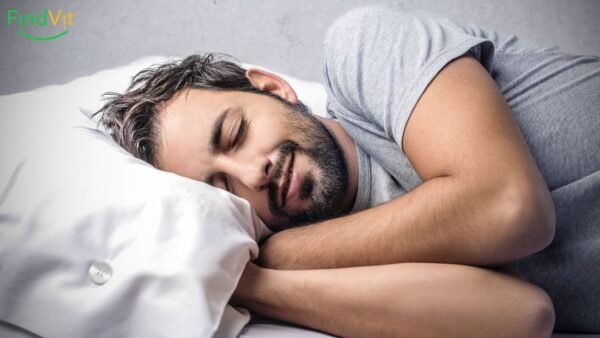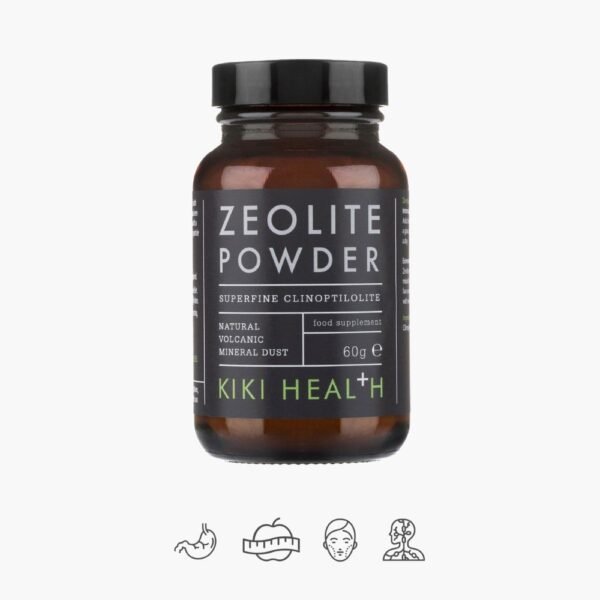Seasonal Affective Disorder (SED) often hits us as the seasons change. We will provide information or pay attention to it and be concerned or look more simply. You will also learn what SES is, what are its causes and how to treat this disorder.
About 51% of 3T adults experience SES. It usually starts at a young age (usually between 18 and 30 years). SES affects women more than men.
What is SES?

Seasonal depression, also known as seasonal affective disorder (SES), is a type of depression. It is caused by the change of seasons and usually starts in late autumn. SES affects millions of people. For some people this is a mild case, but for many SES is severe and requires treatment. Let's take a look at the impact SES can have and try the tactics below to help you feel better.
There is also another version of SES known as "winter blues". It's normal to feel a little down during the colder months. You can be stuck and spend too much time at home when it gets dark outside early.
Seasonal affective disorder is also called seasonal depression.
SES is related to seasonality
Seasonal affective disorder usually occurs when the seasons transition into colder months, but it can also affect the summer. In most cases, SES symptoms appear in late fall or early winter and disappear during the sunny days of spring and summer. Less commonly, people with the opposite pattern have symptoms that start in the spring or summer. Longer days and increasing heat and humidity may influence summer SES. In either case, symptoms may start out mild but worsen as the season progresses.1-7
What causes SES?
Although the specific cause of seasonal affective disorder is unknown, some factors may play a role: 2
Circadian rhythm (your "biological clock"). Reduced levels of sunlight in autumn and winter can lead to SES in early winter. This decrease in sunlight can disrupt your body's internal clock and cause you to feel depressed.2,3,7
Serotonin depletion may affect SES. Reduced exposure to sunlight can lead to a decrease in serotonin, which can lead to depression.2,6,7
Melatonin levels. The change in season can disrupt melatonin, which affects sleep patterns and mood, as well as balance in the body.2,7,8
What affects SES?
Seasonal affective disorder is more common in women than in men and more common in younger people than older people. Factors that may increase the risk of SES include: 1-3, 6-8
People live farther from the equator. SES is more common in people who live further north or south of the equator. This may be due to reduced sunlight in the winter months and longer days in the summer months.1-3,7,8
History of mood disorders. Depression symptoms may worsen seasonally if you have major depression or bipolar disorder. SES may occur more often if you are currently experiencing an anxiety or panic disorder. And blood relatives with SES or another form of depression can also increase the risk of SES.1,2,7
Vitamin D is produced in the skin when it is exposed to sunlight. Vitamin D helps increase the activity of serotonin (a brain chemical that affects mood). Less sunlight and insufficient vitamin D levels from food and other sources can reduce the amount of vitamin D in the body.2,7,9
The most common symptoms of SES are similar to depression and include:
- You feel helpless, sad, or depressed almost every day
- You lose interest in activities you once enjoyed
- You have low energy and feel sluggish
- It's hard to concentrate
- You feel hopeless, worthless, or guilty
Additional symptoms characteristic of early winter SES include:
- Oversleeping
- Overeating, especially cravings for foods high in carbohydrates
- Weight gain
- Tiredness or low energy
Additional symptoms of summer-onset SES include:
- Sleep disorders (insomnia)
- Poor appetite
- Weight loss
- Persistent irritability, restlessness, or agitation
How do you know if SES has touched you?

It is not unusual to feel down or depressed at times. But if these feelings last for several days and you can't be motivated to participate in activities you normally enjoy, see your healthcare professional. This is especially important if your sleeping patterns and appetite have changed, you turn to alcohol or drugs for comfort or relaxation, or you feel hopeless.2-6
To determine if you have seasonal affective disorder, your doctor will gather all the necessary information and evaluate it. Your doctor will ask about your symptoms, thoughts, feelings, and behavior patterns.3,6
How to reduce the symptoms of SES?
Some individuals find it helpful to start treatment earlier than the symptoms of seasonal affective disorder usually start and to continue treatment after the time when the symptoms usually disappear. Others need ongoing treatment to prevent symptoms from recurring.2,3,6,7
Light therapy
Light therapy is the primary treatment for fall SES. In light therapy, also called phototherapy, you sit a meter away from a special light lamp. Light therapy mimics natural outdoor light and causes changes in brain chemicals associated with mood.2,3,5-7,9
A randomized controlled trial of 57 participants with SES showed a more than 40 percent reduction in symptoms after four weeks of exposure to either bright white or dim red light.
Another study with 98 participants examined the effects of light therapy and exercise on depressive symptoms. The researchers found that both treatments, even in combination, were well tolerated and effective in reducing symptoms.9
Although it is not clear why, not everyone with SES responds to light therapy. Also, you may not be able to use light therapy if you are taking certain medications or have specific eye or other medical conditions. For example, light therapy can induce mania in patients with unrecognized or undertreated bipolar disorder.
There are important safety and health factors to consider before using light therapy. Consult an expert before use to make sure it is likely to be safe.2,7,9 To learn more about light therapy for SES, read on.
Psychotherapy
Psychotherapy, also called talk therapy, is another treatment option for SES. A type of psychotherapy called cognitive behavioral therapy (CBT) is often used to help individuals manage their symptoms.2-8 KET is an effective tool to help you become aware of inaccurate or negative thinking so that you can see more clearly in difficult or stressful situations. respond to them more effectively.
Traditional cognitive behavioral therapy has been adapted for use with SES. In addition to the KET tactic of replacing negative thoughts with more positive ones, KET uses a process called behavioral activation. This process helps you identify and schedule enjoyable, engaging indoor or outdoor activities to prevent the loss of interest you may experience with SES.
Medicines
Some people with SES benefit from antidepressant treatment. Keep in mind that it may take several weeks for you to see the full benefits of an antidepressant. Also, you may need to try different medications until you find one that works for you and has the fewest side effects.2,3,5-7
Complementary or alternative medicine
Certain herbal preparations and supplements, such as melatonin, vitamin D and St. John's wort are sometimes used to relieve symptoms of depression, although clinical trial results are conflicting.2,7-9
How to maintain a stable mood and motivation throughout the year?

If the seasonal changes are affecting you, there are things you can do on your own to manage your SES and feel better.
Make your environment sunnier and brighter. Open the blinds, trim tree branches that block sunlight, or add skylights to your home. When at home or in the office, sit closer to bright windows.3,4,7
Go outside. Take a long walk, have lunch in a nearby park or just sit on a bench and enjoy the sun. Even on cold or cloudy days, outdoor light can help – especially if you spend some time outside within two hours of getting up in the morning.3,4,7
Exercise regularly. Exercise and other physical activities help reduce stress and anxiety, both of which can increase SES symptoms. Being fitter can also make you feel better, which can lift your spirits.3,4,6,7,11
Maintain regular sleep habits. Schedule a time each day to wake up and go to bed. Get enough sleep to feel rested.
Choose quality products. Choose healthy foods for meals and snacks. Don't drink alcohol to relieve yourself.3,4
Practice stress management. Learn stress management techniques. You can try relaxation techniques such as yoga, tai chi, and meditation. Uncontrolled stress can lead to depression, overeating, or other unhealthy thoughts and behaviors.8,10
Communicate. When a person is feeling down, it can be difficult to communicate, so try to bond with people you enjoy being around. They can offer support, a shoulder to cry on, or a laugh to encourage.3,4,11
Take a trip. If possible, spend your winter holidays in sunny, warm places if you have winter SES, or in cooler places if you have summer SES.6
Don't dismiss those annual feelings as just a seasonal joke that you have to overcome on your own. Consult a doctor, if symptoms are severe or interfere with enjoying life.2-4,8
FindVit
Winter is a particularly important time to assess your vitamin D levels, especially if you live in Lithuania. Take a test chosen by a health professional "Your Day" and find the vitamins and minerals you need.
Literature:
- Specifiers for depressive disorders: With seasonal pattern. In: Diagnostic and Statistical Manual of Mental Disorders DSM-5. 5th ed. American Psychiatric Association; 2013. https://dsm.psychiatryonline.org. [Accessed Jan. 2, 2021]
- Seasonal affective disorder. National Institute of Mental Health. https://www.nimh.nih.gov/health/publications/seasonal-affective-disorder. [Accessed Jan. 2, 2022]
- Seasonal affective disorder (SAD). American Psychiatric Association. https://www.psychiatry.org/patients-families/depression/seasonal-affective-disorder. [Accessed Jan. 2, 2022]
- Seasonal affective disorder: More than the winter blues. American Psychological Association. https://www.apa.org/topics/depression/seasonal-affective-disorder. [Accessed Jan. 2, 2022]
- Seasonal affective disorder. MentalHealth.gov. https://www.mentalhealth.gov/what-to-look-for/mood-disorders/sad. [Accessed Jan. 2, 2022]
- Major depressive disorder with a seasonal pattern. National Alliance on Mental Illness. https://www.nami.org/About-Mental-Illness/Mental-Health-Conditions/Depression/Major-Depressive-Disorder-with-a-Seasonal-Pattern. [Accessed Jan. 2, 2022]
- Galima S, Vogel S, Kowalski A. Seasonal affective disorder: Common questions and answers. Am Fam Physician 2020;102(11):668-672.
- Haller H, Anheyer D, Cramer H, Dobos G. Complementary therapies for clinical depression: An overview of systematic reviews. BMJ Open 2019;9(8):e028527.
- Seasonal affective disorder and complementary health approaches: What the science says. National Center for Complementary and Integrative Health. https://www.nccih.nih.gov/health/providers/digest/seasonal-affective-disorder-and-complementary-health-approaches-science. [Accessed Jan. 2, 2022]
- Mind and body approaches for stress and anxiety: What the science says. https://www.nccih.nih.gov/health/providers/digest/mind-and-body-approaches-for-stress-science. [Accessed Jan. 6, 2022]
- Depression. National Institute of Mental Health. https://www.nimh.nih.gov/health/publications/depression. [Accessed Jan. 6, 2022]











